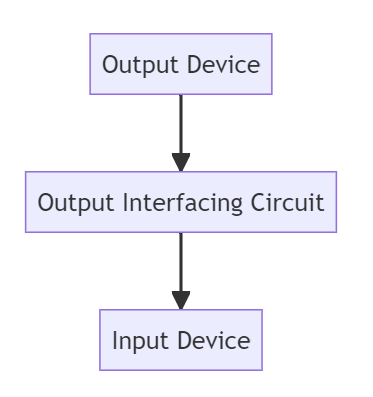Output Interfacing Circuits: A Comprehensive Guide
Introduction
Welcome to our comprehensive guide on output interfacing circuits. In this article, we will delve into the fascinating world of output interfacing circuits, exploring their functionality, applications, and design considerations. Whether you're a beginner or an experienced electronics enthusiast, this guide aims to provide you with the knowledge you need to understand and implement output interfacing circuits effectively. So let's dive in!
Understanding Output Interfacing Circuits
Output interfacing circuits play a crucial role in electronic systems, facilitating the smooth transfer of signals between different devices or subsystems. These circuits act as bridges, connecting the output of one component to the input of another, thereby ensuring compatibility and efficient signal transfer. By employing appropriate interfacing techniques, engineers can overcome impedance mismatches, voltage level disparities, and other challenges that may arise during device connections.
Importance of Output Interfacing Circuits
Efficient signal transfer is of paramount importance in electronic systems to ensure accurate and reliable communication between components. Output interfacing circuits enable the seamless integration of different devices, allowing them to work together harmoniously. Whether it involveds connecting a microcontroller to a display, linking sensors to a data acquisition system, or interfacing with motors and actuators, output interfacing circuits are vital for the successful operation of the entire system.
Key Components and Design Considerations
When designing output interfacing circuits, several components and considerations come into play. Let's explore some of the key elements involved:
1. Buffer Amplifiers
Buffer amplifiers are commonly used in output interfacing circuits to isolate the output stage from the load and provide impedance matching. They ensure that the output signal remains stable and unaffected by the load's characteristics, resulting in improved signal integrity and reduced noise.
2. Level Shifting Techniques
In cases where the voltage levels of the output and input devices differ, level-shifting techniques are employed. These techniques enable the translation of signal levels to ensure compatibility between different components. Common level-shifting methods include voltage dividers, level shifters, and operational amplifiers configured as voltage translators.
3. Current and Voltage Limiting
To protect both the output and input devices from potential damage, Current and voltage-limiting techniques are employed. These techniques prevent excessive current flow or voltage levels that could exceed the device's specifications. Current-limiting resistors, diodes, and voltage regulators are commonly used to safeguard the integrity of the interconnected components.
4. Signal Conditioning and Filtering
In some cases, output signals may require conditioning or filtering before being interfaced with the next stage. Signal conditioning involves amplifying, attenuating, or modifying the output signal to meet the requirements of the input device. Filtering techniques, such as low-pass, high-pass, or band-pass filters, are employed to remove unwanted noise or interference from the output signal, ensuring a clean and accurate transfer.
5. Protection Mechanisms
Output interfacing circuits should incorporate protection mechanisms to safeguard the connected devices and the overall system. Overcurrent protection, overvoltage protection, and short-circuit protection techniques are implemented to prevent potential damage caused by faults or unforeseen circumstances. Fuse elements, circuit breakers, and transient voltage suppressors are examples of protective devices commonly used in output-interfacing circuits.
Applications of Output Interfacing Circuits
Output interfacing circuits find applications in various fields and industries. Here are a few examples:
1. Industrial Automation
In industrial automation systems, output interfacing circuits are used to connect programmable logic controllers (PLCs) to actuators, motors, and other devices. These circuits ensure accurate and timely control of machinery, facilitating efficient industrial processes.
2. Communication Systems
In communication systems, output interfacing circuits are employed to connect transmitters and receivers, ensuring seamless data transmission. From wireless communication to wired networks, these circuits play a critical role in maintaining reliable and uninterrupted communication channels.
3. Consumer Electronics
In consumer electronics, output interfacing circuits are utilized to interface various devices such as displays, speakers, and sensors with microcontrollers or processors. These circuits enable the functionality and interaction of different components, providing users with a seamless and intuitive experience.
Conclusion
In conclusion, output interfacing circuits are vital components in electronic systems, enabling efficient signal transfer and seamless integration of different devices. By understanding the key components, design considerations, and applications of these circuits, engineers can effectively implement them in their projects. We hope this comprehensive guide has provided you with valuable insights into output interfacing circuits. Remember to consider the specific requirements of your system and select the appropriate interfacing techniques to ensure optimal performance.

Note: The above diagram represents a basic output interfacing circuit connecting an output device to an input device.
